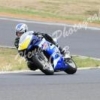FLUTTER sound as BOV
Announcements
-
Similar Content
-
Latest Posts
-
By soviet_merlin · Posted
I always wonder where the obsession with legal/illegal spacing on number plates in the UK comes from. Because it comes up in comments in every UK-based video I see on youtube. From my point of view all of your plates look a bit odd. Just because there are no markings whatsoever. In Australia we have the state that has to be on it. In Europe you get stamps and state logos. Yours look a bit like a throwaway draft that people then stuck with. And attached with blu tack so that it falls off at the slightest disturbance. Not trying to hate, but it's interesting how things are done in different countries. Do you have to follow a lettering convention when choosing a custom plate? -
Hybrid sounds like a supercharger... It's half a turbo, with a belt to drive it! Oh wait, they're just called super chargers...
-
By GabsReDeal · Posted
Before starting any work, we attempted to adjust the tune. However even after adjusting it to certain extremes like completely stopping fuel, it had no effect. What fixed it was removing the Nistune Board and installing the original EPROM instead. This immediately fixed the issue. Everything should have been fine with the Nistune Board installation, so I am unsure why it has caused a problem. The soldered connector is also properly soldered. This worked when I first got the 550cc injectors, before cleaning, but that may have been a coincidence. We ended up not installing the fuel pump hanger (at least for now). So currently running stock injectors, stock fuel pump, stock fuel pump hanger – Well everything stock except the exhaust. Now I have around €1400 in Nistune, Injectors, and Hanger collecting dust for the time being, perhaps I'll install them in the future. For now I'll enjoy the car as is 😁 Thanks a lot for all your assistance, I really appreciate all the help you have given me. -
The turbo can’t be the issue. They’re proven to make much much power than you’re making. There is something in the setup that isn’t correct. - has the exhaust got any silly step downs? - what exhaust manifold?
-








Recommended Posts